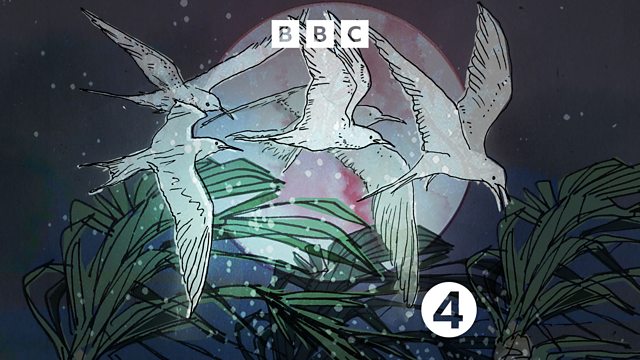Out of the Shadows
Songwriter and storyteller Karine Polwart brings together her twin loves of astronomy and history for a story of discovery, diversity and the righting of a historical wrong.
Singer, story teller and seven-times Radio 2 Folk Awards winner, Karine Polwart brings together her love of science, history and the natural world.
Karine looks up into the dark for a story of discovery, diversity and the righting of a historical wrong.
When young geologist turned planetary scientist Annie Lennox surveyed the night sky of her Aberdeenshire home, little did she realise that one day she'd be giving names to landmarks on our closest neighbours in the solar system. In 2021, while studying for her PhD, Annie discovered an enormous 50km wide crater near Mercury's southern pole. An area that had never been seen in sunlight until until the Messenger mission of 2015.
The crater's distinctive spectral colour and shape caught her eye. As the first person to see it, Annie has the honour of naming it. An accomplished singer and harpist, Annie named it 'Nairne' after the 17th-century Scottish poet and songwriter Lady Carolina Nairne.
All the craters of Mercury are named after famous artists, Burns and Pushkin are there along with Bach and Boccaccio. And it was this dominance of white men that Annie wanted to challenge. The International Atstonomical Union's naming conventions around new discoveries have proven themselves inherently sexist and exclusionary and Annie felt compelled to do waht she could to rebalance it. In her lifetime, Lady Carolina Nairne was responsible for such staples of Scottish folk singing as 'Charlie is my darlin' and 'Caller Herrin', yet she's largely unknown, publishing much of her work anonymously or under pseudonyms. Now there is a corner of the universe that will forever be a testament to her talents.
Produced by Peter McManus
Written and presented by Karine Polwart
Music by Karine Polwart and Pippa Murphy
Vocals - Karine Polwart
Piano - Dave Milligan
Last on
Statement from the International Astronomical Union
From Rita Schulz, chair of the IAU Working Group for Planetary Nomenclature (WGPSN).
Regarding the naming of craters on Mercury.
Indeed it is particularly important to acknowledge the achievements of people with marginalized identities, specifically due to the oppression they faced across centuries of existing in society. Unfortunately, it is this very oppression that often makes it difficult to accurately determine whether somebody would have identified with the modern descriptors we use for such identities, particularly people who identify within the LGBTQ+ spectrum. While LGBTQ+ people have always existed, they have, relatively speaking, only recently developed the vocabulary typically used today to describe their identities. It may very well be that many great minds of the past would have identified as queer, gay, bi, or trans today: however they lacked the vocabulary to do so in life. Therefore, while we can make certain assumptions based on what evidence we have, we cannot posthumously ascribe a modern identity category to somebody who lived in a time where these words were not in use.
The unfortunate truth is that the oppression of these people has led to their invisibility in many cases across history, as living openly as themselves could be a genuine threat to their lives, a problem that we still grapple with today. In more recent years, the surge of acceptance towards non-cis, non-straight identities has led to a wider spread of openly LGBTQ+ people. This will hopefully allow for more concrete and unambiguous diversity in naming planetary features in the future, once contemporary minds begin to qualify in accordance with time-sensitive regulations.
We are making good progress in our efforts to be international and inclusive in naming planetary surface features, including cases where features are named after individuals, to correct the imbalance built up in the past. In addition, we have introduced the category/theme: “Historic pioneers who crossed new horizons in the exploration of the Earth, sea and sky”, which provides the means to name features after important people marginalised in the past without being restricted to the people defined in the existing themes, such as for instance “Tenzing Norgay (1914-1986)” one of the two first ascenders of Mount Everest.
People who match the category/theme* for craters on Mercury are NOT excluded for accompanying their art with a degree of activism. A recent example is the “Lorde” crater which was named (in April 2022) after esteemed American author, feminist, and equal rights activist, “Audre Geraldine Lorde” (1934-1992) for her work as poet and writer.
*Mercury Crater Naming Category/Theme: “Artists, musicians, painters, and authors who have made outstanding or fundamental contributions to their field and have been recognized as art historically significant figures for more than 50 years”
For your information I provide you with the link to our naming rules, as well as with the exact wording of rule 9:
“No names having political, military or religious significance may be used, except for names of political figures prior to the 19th century.”
Broadcasts
- Sun 10 Sep 2023 13:30±«Óătv Radio 4
- Sat 23 Sep 2023 23:30±«Óătv Radio 4

